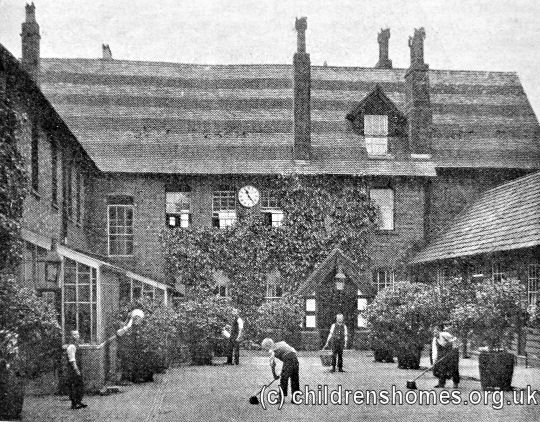The Waifs and Strays Story
The Post-War Years
As the war progressed, the Society began to consider what its direction and aims would be. Although it operated a large number of residential homes, fostering had always been viewed as the ideal form of care for children lacking their own family. In 1944, reflecting a shift between the balance of the two, the Wellingborough Home became what was described as:
"a reception and club centre for children boarded-out in the vicinity. It is used for the rehabilitation of children before boarding-out, and there is a percentage of 'permanent boarders', children not suitable for foster-parents. Provision is also made for visits by Old Boys."
The eventual aim of the scheme was to convert all suitable branch homes into Boarding-Out Centres, with a team of Boarding-Out Welfare Officers appointed to recruit and supervise the expanded number of foster homes. Other aspects of the Society's work were being put on a more professional footing with an increased emphasis on staff training and staff conferences. A staff training college was opened in 1947 in part of the Hatton Home at Wellingborough.
The planned change of emphasis was, however hampered by the after effects of the war. Homes which had been evacuated could not always simply just return to their old buildings. Some properties which had been requisitioned by the government were often slow to be handed back and were then discovered to have been damaged or neglected.
The Society received a particularly uncomfortable blow when tragedy hit its Standon Farm Home, which had become an Approved School in 1938. In February 1947, discontent amongst a number of the boys at the isolated institution resulted in their scheming to murder the headmaster. The plan went awry and an assistant master named Peter Fielding was killed with a stolen rifle by one of the boys. The school was forced to close and the Society earned considerable bad publicity from the episode.

Standon Boys' Farm Home - entrance block from the north, c.1907. © Peter Higginbotham
On a more positive front, in line with the general move towards housing boys and girls together, the Society opened its first mixed home in Bexhill in 1946.
In 1946, the Society dropped the phrase 'Waifs and Strays' from its name and became the Church of England Children's Society. In the minds of the public, though, the old name was to linger for a great many years.
The 1948 Children Act, resulting from the report of the Curtis Committee, gave considerable powers and responsibilities to local authorities, who were required to establish Children Committees and appoint Children Officers. In November 1949, A.R. Vaughan, the Society's Secretary since 1932, reached retirement age and — much to his chagrin — was forced to take his retirement. He could be consoled, however, by the thought that the changes introduced under his leadership, some pushed through in the face of considerable resentment, placed the Society in a good position to operate alongside the new council-run Children's Departments. After leaving the Society, he became General Secretary of the Fairbridge Society, an organisation devoted to the emigration of children.
Except where indicated, this page () © Peter Higginbotham. Contents may not be reproduced without permission.


